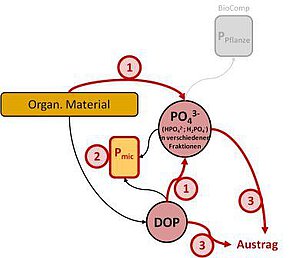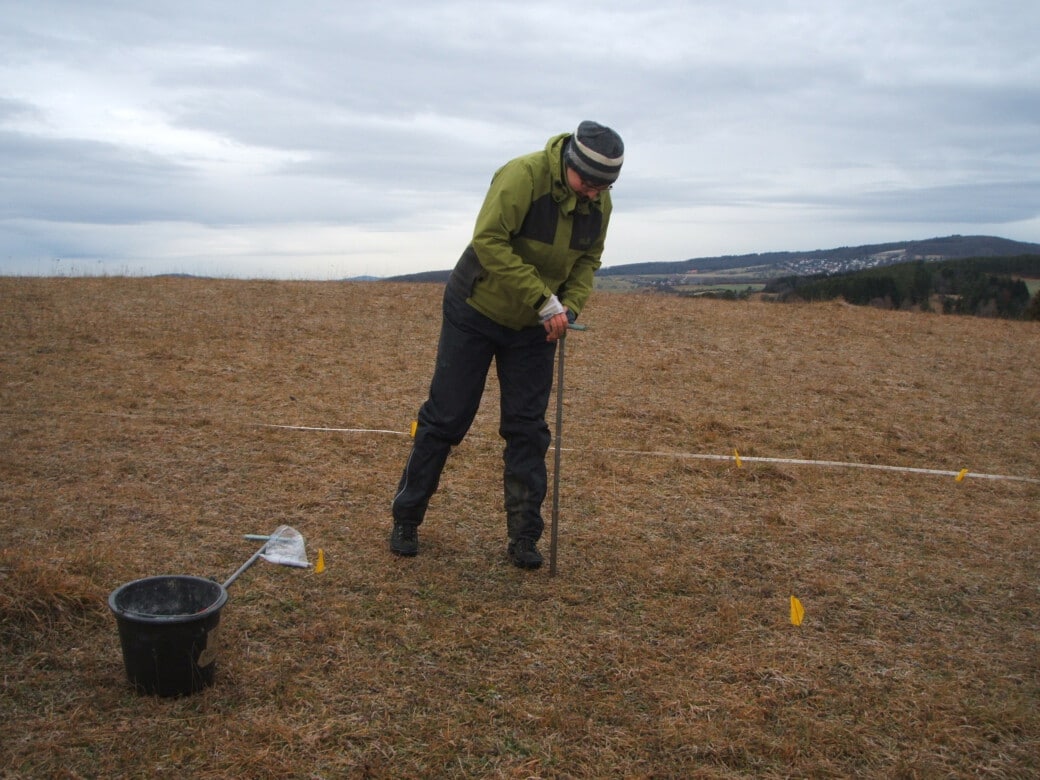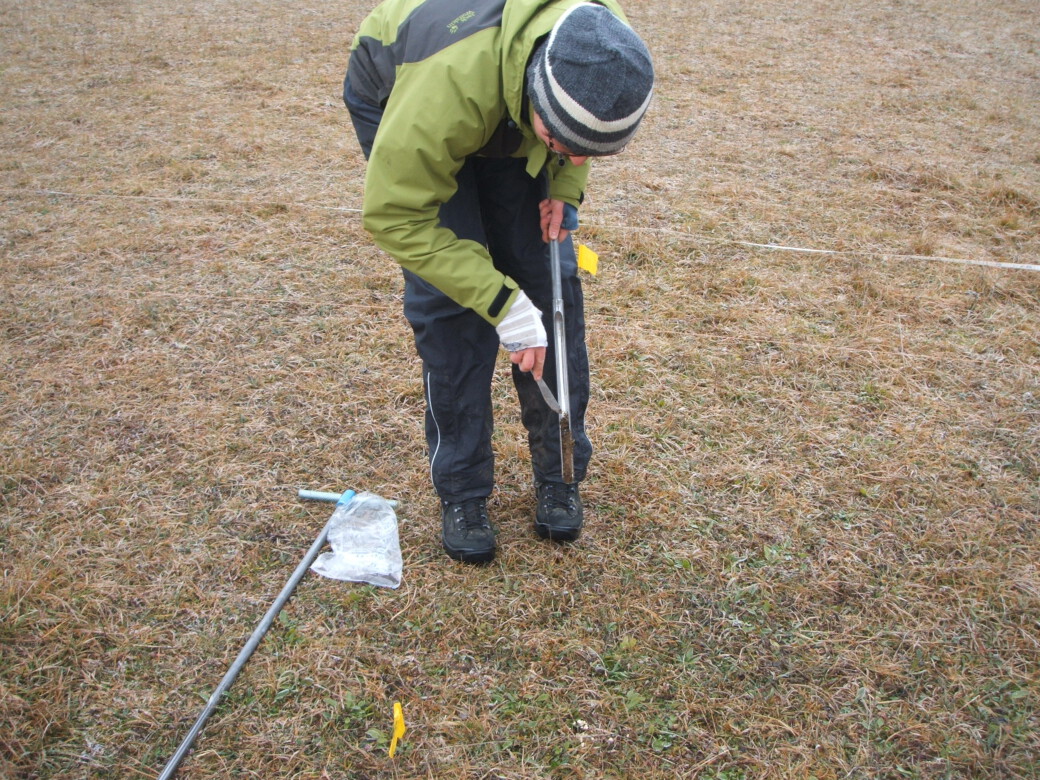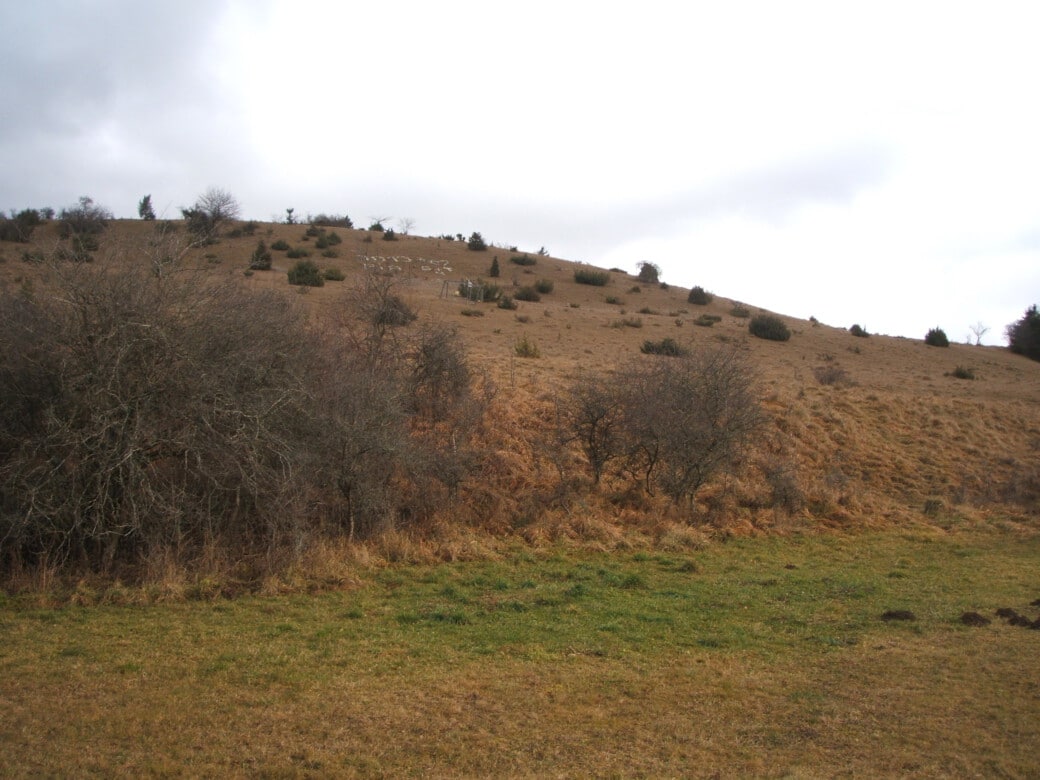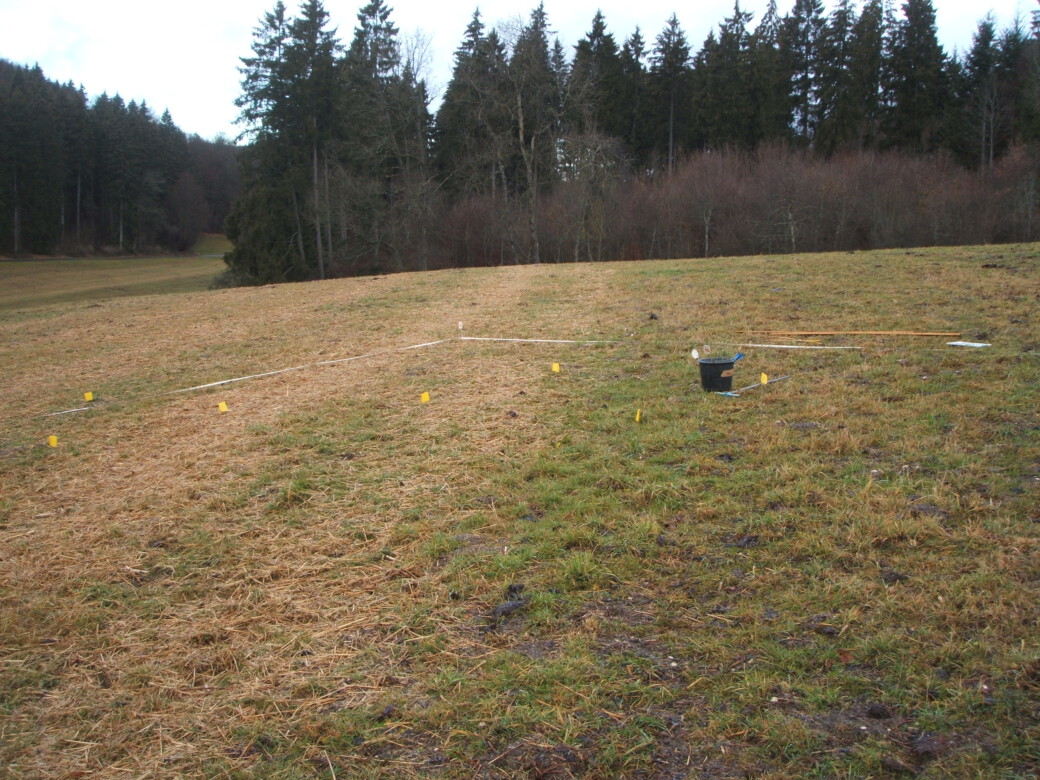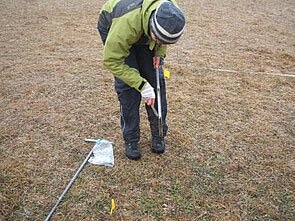Phosphorus cycling in grasslands and forests of differing diversity and land use
Phosphorus (P) is an essential nutrient for organism growth and for photosynthetic carbon assimilation and besides Nitrogen (N) the major element limiting terrestrial productivity. Particularly in managed ecosystems, the predicted P fertilizer scarcity calls for a comprehensive understanding of P transformation processes in soil.
Results of the preceding DYNPHOS phase showed that increasing plant diversity decreased plant- available P concentrations in soil through increasing P exploitation at the Schwäbische Alb. It remains unclear if combined effects of land-use intensity and plant diversity on P transformation processes in soil will result in tight ecosystems P cycling and thus, requiring less fertilizer P while maintaining productivity.
The objective is to differentiate the effect of land-use intensity (LUI) and plant diversity on
- gross P mineralization,
- microbial biomass P, and
- dissolved P leaching (PO4-P and DOP)
in soil of all grassland and forest plots of the three exploratories (n = 300).
LUI has contrasting implications for P cycling in forests and grasslands i. e., high removal of P in forests versus high input of P in grasslands under high land-use intensity. Therefore, hypotheses are postulated specifically for forests and grasslands. The following hypotheses will be tested.
Forests:
1a. Increasing LUI decreases tree growth, foliar P concentrations, and root exudation. Therefore, gross P mineralization rates are negatively correlated with LUI.
1b. Increasing plant diversity results in balanced microclimate and increased decomposition-substrate diversity and thus, accelerated microbial activity. Therefore, gross P mineralization is positively related to plant diversity under comparable LUI.
2a. Increasing LUI increases biomass removal and thus, reduces root mass and root exudation in soil. Therefore, microbial biomass P decreases with increasing LUI.
2b. Plant diversity increases gross P mineralization and thus, microbial biomass. Therefore, plant diversity increases microbial biomass P under comparable LUI.
3a. Increasing LUI decreases P supply in soil and thus, decreases PO4-P and DOP leaching.
3b. Because of increased plant P uptake and increased microbial biomass P, plant diversity is negatively related to PO4-P and DOP leaching under comparable LUI.
Grasslands:
1c. Increasing LUI increases N (and P) input into soil thus, decreasing root mass and root exudation. These decreases microbial activity and thus, gross P mineralization rates.
1d. Under comparable LUI, positive effects of microclimate and decomposition-substrate diversity result in increased gross P mineralization rates in highly diverse ecosystems.
2c. The increased N (and P) input in case of high LUI results in decreased microbial biomass, Therefore, increasing LUI decreases microbial biomass P.
2d. Under comparable LUI, increased gross mineralization rates in highly diverse ecosystems are related to increased microbial biomass. Therefore plant diversity increases microbial biomass.
3c. Because of increased P input and decreased microbial biomass P, LUI increases PO4-P and DOP leaching.
3d. Under comparable LUI, plant diversity leads to decreased PO4-P and DOP leaching because of increased plant uptake and microbial biomass P.
Therefore, we expect that plant diversity reduces P leaching under high LUI in grassland and we will focus on the relationship between biodiversity and the P cycle in soil accounting for management, site conditions and historic land-use of the studied plots.
